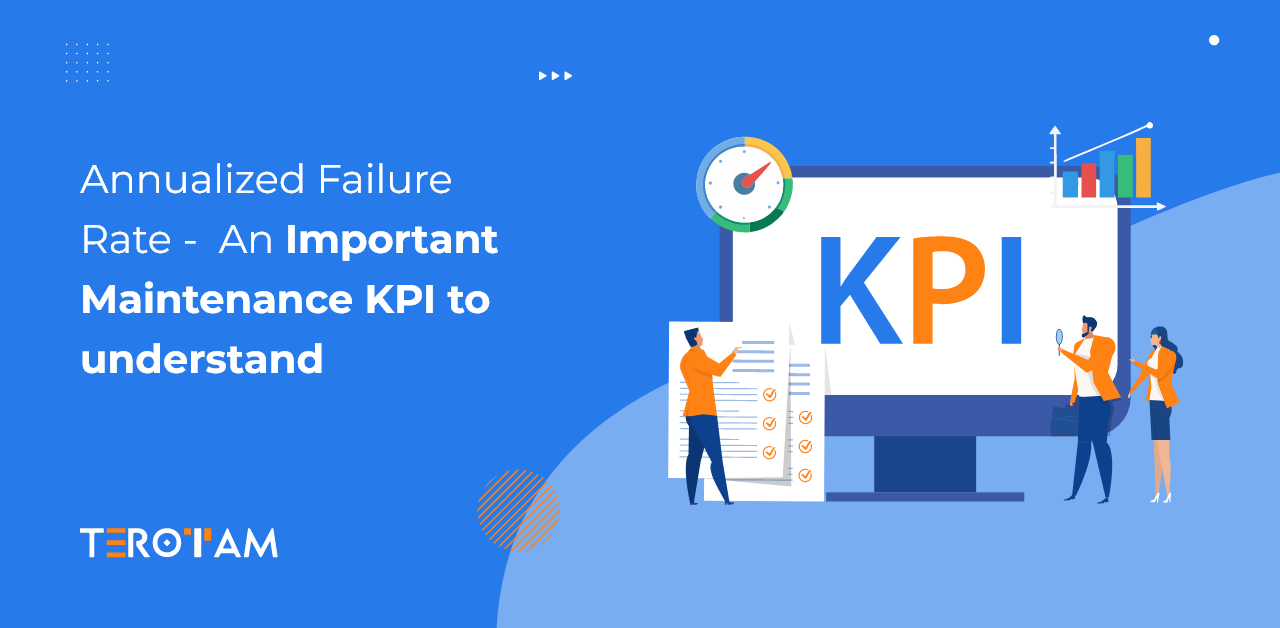Equipment reliability is crucial for maintaining efficient operations across various industries. Understanding failure rates, which represent the frequency at which equipment fails during operation, plays a significant role in maintenance planning and decision-making. Accurately measuring failure rates allows organisations to identify trends, prioritise maintenance tasks, and allocate resources effectively, ultimately leading to enhanced operational efficiency and reduced costs.
The Annualised Failure Rate (AFR) serves as a critical metric that quantifies equipment failure frequency over a year, providing a clear picture of asset reliability. Standardising failure data on an annual basis enables maintenance managers to assess equipment performance more effectively and make informed decisions. This metric aids in identifying high-risk assets and also supports the development of targeted maintenance strategies, allowing organisations to implement proactive measures that reduce unexpected failures and optimise maintenance efforts.
In this article, we will explore the concept of AFR, its calculation, and its applications in maintenance management.
Annualized Failure Rate – Quick understanding
The Annualized Failure Rate is a reliability metric that quantifies the frequency of equipment failures over a specified period, typically expressed as a percentage or a ratio. It provides insights into the likelihood of equipment failing in a given year, facilitating better maintenance planning and resource allocation.
AFR is particularly valuable for organisations aiming to improve reliability, reduce downtime, and optimise maintenance schedules. By understanding the failure patterns of equipment, maintenance teams can implement proactive strategies to mitigate risks associated with unexpected failures.
Calculating Annualized Failure Rate
AFR can be calculated using the following formula:
AFR= (Total Failures in a Year / Total Operating Hours in a Year) × Operating Hours per Year
Where:
- Total Failures in a Year: The number of times an equipment or system fails within a year.
- Total Operating Hours in a Year: The total hours the equipment is in operation throughout the year.
- Operating Hours per Year: Typically considered as 8,760 hours (24 hours a day × 365 days).
Hypothecated Example of AFR Calculation
Consider a manufacturing machine that operates 8,000 hours a year and experiences 4 failures within that period. The AFR can be calculated as follows:
- Total Failures: 4
- Total Operating Hours: 8,000
AFR = (4/8,000)×8,760 = 4.38%
In this case, the machine has an Annualized Failure Rate of 4.38%, indicating that it is expected to fail approximately 4.38 times in a year under normal operating conditions.
Factors Affecting Annualized Failure Rate
Like other maintenance KPI, there are several factors can influence the Annualized Failure Rate of equipment:
- Operational Conditions: Equipment operating in harsh or variable environments may experience higher failure rates due to stress and wear.
- Age of Equipment: Older equipment tends to have higher failure rates, necessitating more frequent maintenance.
- Maintenance Practices: Consistent and effective maintenance practices can significantly reduce AFR, whereas neglect can increase it.
- Design and Quality: The initial design and quality of the equipment play a crucial role in its reliability and failure rates.
Application of Annualized Failure Rate (AFR) in Maintenance Management
The Annualized Failure Rate (AFR) serves as a key performance indicator (KPI) in maintenance management, allowing organisations to improve their operational reliability and efficiency. By effectively leveraging AFR, maintenance teams can make informed decisions that enhance asset performance and reduce costs. Here are several key applications of AFR in maintenance management:
1. Reliability-Centred Maintenance (RCM)
Reliability-Centred Maintenance is a systematic approach that prioritizes maintenance tasks based on the reliability and criticality of assets. By analyzing the AFR of different equipment, organisations can classify assets into categories based on their performance and failure patterns. This classification helps in determining the appropriate maintenance strategies, such as:
- Preventive Maintenance: For equipment with a low AFR, preventive measures can be scheduled at regular intervals to ensure reliability.
- Predictive Maintenance: Assets with a rising AFR may warrant predictive maintenance techniques, utilising condition-monitoring tools to detect potential failures before they occur.
- Corrective Maintenance: For high-availability assets with a low AFR, corrective maintenance may be sufficient, focusing on repairs only when failures occur.
2. Risk Management
Understanding AFR allows organisations to assess the risks associated with equipment failures. High AFR values indicate a greater risk of unplanned downtime, which can significantly impact productivity and revenue. Maintenance teams can use this information to:
- Prioritise Risky Assets: Focus on high-risk equipment for more frequent inspections and maintenance interventions.
- Develop Contingency Plans: Create action plans to mitigate risks associated with potential failures, ensuring that backup resources or alternative processes are in place.
3. Asset Performance Monitoring
Continuous monitoring of AFR provides valuable insights into the performance trends of assets over time. Maintenance managers can:
- Identify Performance Degradation: An increasing AFR may signal that equipment is degrading, prompting a review of maintenance practices or operational conditions.
- Benchmark Performance: With comparing the AFR of similar assets, organizations can identify best practices and set performance targets for improvement.
4. Budgeting and Cost Control
AFR data can directly inform budgeting and cost control initiatives. By understanding the failure rates of various assets, maintenance managers can:
- Allocate Resources Effectively: Allocate maintenance budgets based on the criticality and performance of assets, focusing resources on high-Failure Rate equipment.
- Reduce Maintenance Costs: By proactively addressing the root causes of high AFR, organisations can lower the costs associated with repairs, downtime, and lost productivity.
5. Maintenance Strategy Development
AFR helps in the formulation of tailored maintenance strategies for different types of equipment. Some applications include:
- Developing Maintenance Schedules: Use AFR data to determine optimal maintenance frequencies that align with the expected failure rates of assets, minimising unnecessary interventions.
- Implementing Continuous Improvement: Regularly review and analyze AFR to identify opportunities for improving maintenance processes, thereby enhancing overall asset reliability.
6. Training and Knowledge Sharing
Training maintenance personnel on the significance of AFR and its applications can foster a culture of reliability within the organisation. This includes:
- Promoting Awareness: Educating teams about how AFR impacts operational efficiency and the importance of accurate reporting and tracking of failures.
- Sharing Best Practices: Using AFR data to create case studies and lessons learned that can be shared across the organisation, promoting continuous learning and improvement.
Correlation between AFR and MTBF
Understanding the relationship between the Annualized Failure Rate (AFR) and Mean Time Between Failures (MTBF) is essential for maintenance management. Both metrics provide valuable insights into equipment reliability but approach it from different angles. While AFR quantifies the frequency of failures over a specified period, MTBF represents the average time interval between consecutive failures of a system or component.
The Mathematical Relationship with AFT and MTBF
The relationship between AFR and MTBF can be expressed mathematically. The Annualized Failure Rate can be derived from MTBF using the following formula:
AFR = 1 / MTBF×Operating Hours per Year
Where, Operating Hours per Year is typically 8,760 hours for continuous operation.
This equation illustrates that as MTBF increases, AFR decreases. Conversely, a lower MTBF results in a higher AFR. This inverse relationship means that improving MTBF through effective maintenance practices leads to a reduction in the Annualized Failure Rate.
Wrapping it up
Integrating the Annualized Failure Rate (AFR) into your maintenance approach can truly transform your operations, enhancing equipment reliability and efficiency like never before. Understanding how AFR and Mean Time Between Failures (MTBF) work together empowers you to make proactive decisions that keep your machinery running at peak performance and significantly reduce downtime.Curious about how to take your maintenance strategies to the next level? We’re just a message away! Drop us a line at contact@terotam.com








